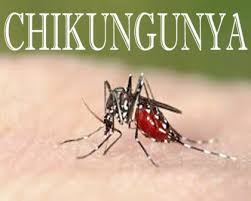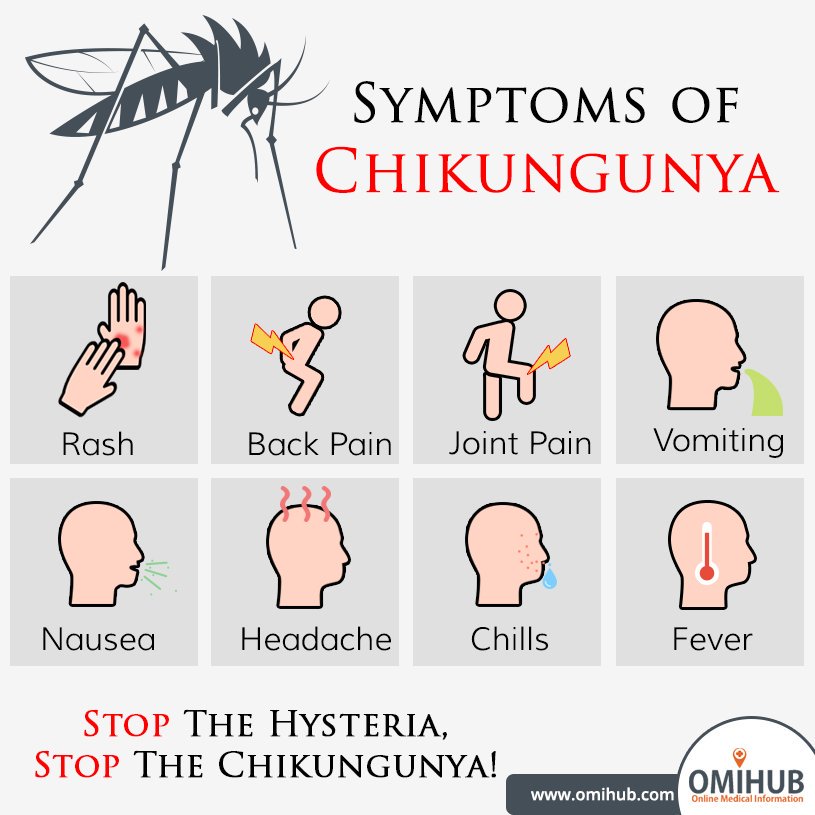Chikungunya Virus Infection
Chikungunya virus (CHIKV) is an alphavirus transmitted by mosquitoes, mostly Aedes aegypti and Aedes albopictus. After half a century of focal outbreaks of acute febrile polyarthralgia in Africa and Asia, the disease unexpectedly spread in the past decade with large outbreaks in Africa and around the Indian Ocean and rare autochthonous transmission in temperate areas.
 This emergence brought new insights on its pathogenesis, notably the role of the A226V mutation that improved CHIKV fitness in Ae. albopictus and the possible CHIKV persistence in deep tissue sanctuaries for months after infection.
This emergence brought new insights on its pathogenesis, notably the role of the A226V mutation that improved CHIKV fitness in Ae. albopictus and the possible CHIKV persistence in deep tissue sanctuaries for months after infection.
Massive outbreaks also revealed new aspects of the acute stage: the high number of symptomatic cases, unexpected complications, mother-to-child transmission, and low lethality in debilitated patients. The follow-up of patients in epidemic areas has identified frequent, long-lasting, rheumatic disorders, including rare inflammatory joint destruction, and common chronic mood changes associated with quality-of-life impairment.
Thus, the globalization of CHIKV exposes countries with Aedes mosquitoes both to brutal outbreaks of acute incapacitating episodes and endemic long-lasting disorders.
Chikungunya Infection, a Two-Stage Disease
Acute Stage
Most patients infected with CHIKV develop acute symptoms, usually 2 to 6 days after the infective mosquito bite. In Reunion Island in 2005–2006, the prevalence of asymptomatic infections was about 5% to 10%
The first symptoms start abruptly and last for about a week before spontaneous improvement. The acute stage is defined as the first 10 days after disease onset. The most frequent symptoms are high fever, arthralgias, back pain, and headache.
Fever is usually high, and is poorly responsive to antipyretics. Illness is associated with intense fatigue, anorexia, myalgias, nausea, and vomiting in adults, and even transient confusion in elderly patients.

Chronic Stage
After the short-lived improvement following the acute stage, the life of the patient recently infected with CHIKV can be impaired by early exacerbation, inflammatory relapses, long-lasting rheumatism, and a significant loss in the quality of life
This deterioration is more frequent in patients over 40 years of age and/or with underlying diseases, notably rheumatic or traumatic diseases
High CHIKV viral loads in the acute stage are also associated with the persistence of symptoms
Globalization and Prevention
The size and speed of international population movements and the progressive worldwide dissemination of the tiger mosquito increase the risk of new epidemic emergence of CHIKV.
International collaboration in preparedness and response to CHIKV introduction in susceptible regions should limit this threat.
Controls in epidemic countries can be improved by prompt vector control and the isolation of infective patients under bednets, efficient action that is still neglected.
To date, there is no commercial vaccine against CHIKV. Because of the possible risk of viral persistence, live CHIKV vaccines have been abandoned in favor of new candidates such as consensus-based DNA vaccines
